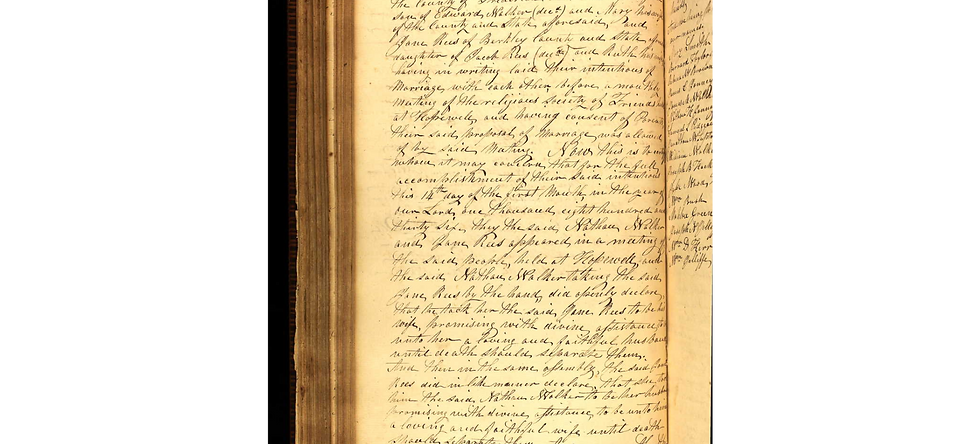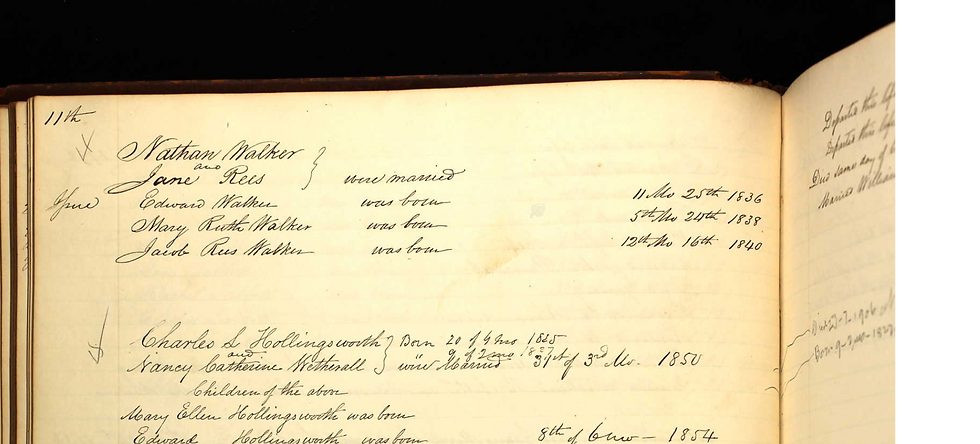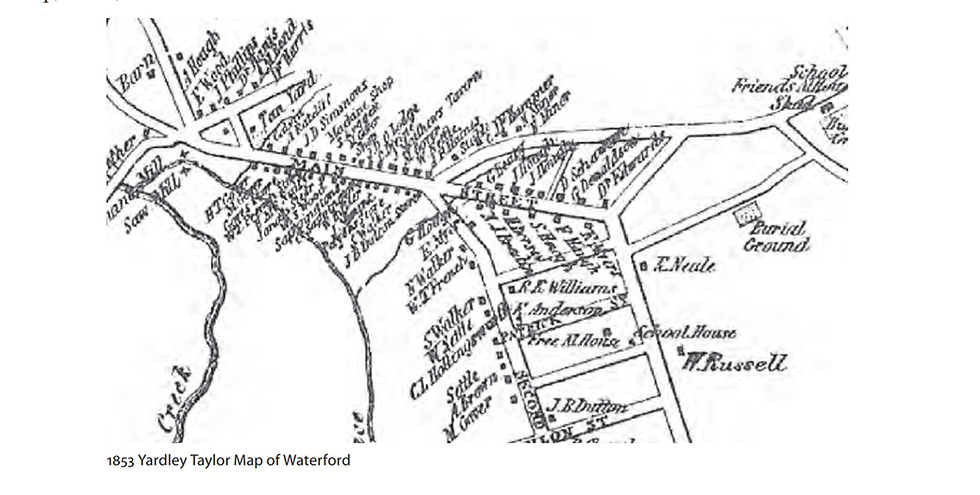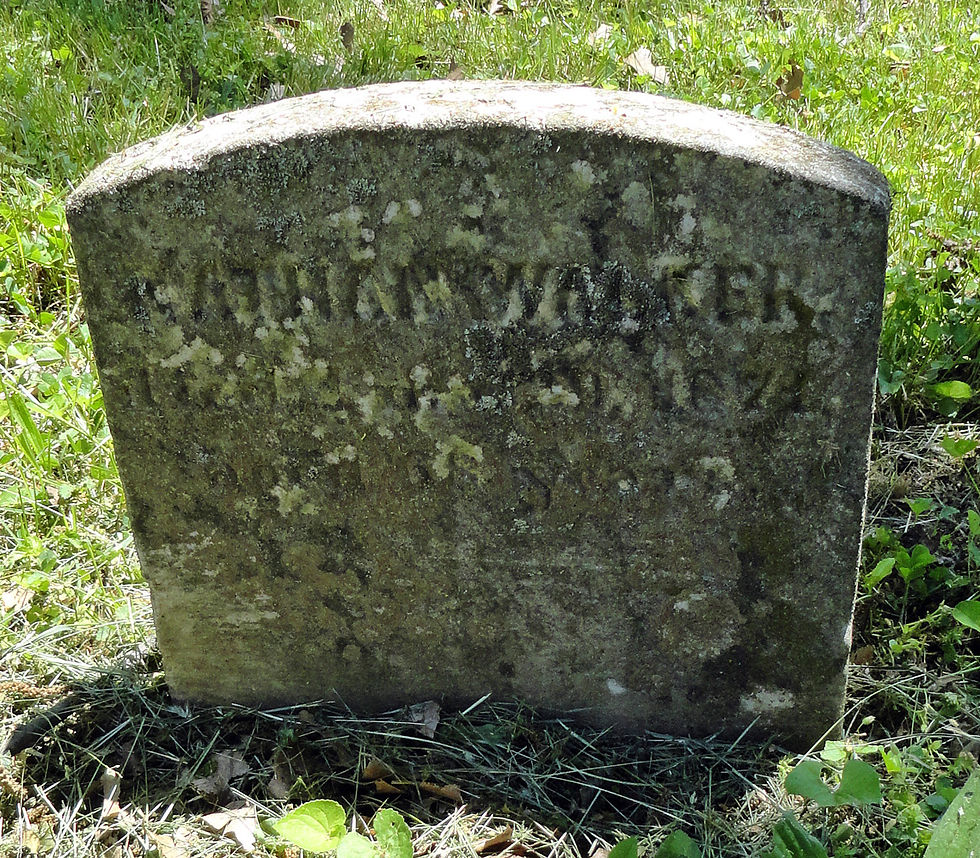Three Guys from Albuquerque - Part 4
- Julie Jeffery Manwarren

- Jun 30, 2021
- 6 min read
When I purchased three 19th century photographs in Old Town Albuquerque, New Mexico, I had no idea where the three men staring back at me would lead.
If you are just joining, and want to read my previous posts in this series, start here.
After all that I discovered about H.P. Perrine, I felt brave enough to investigate the next photograph of a man with a name I couldn't decipher.
I originally thought the name on the back of the picture was J. WyCough. But I didn't get anything promising in a search with that last name.
I then tried MyCough.
I did find some people with that last name and even found a variation on the spelling - a J. B. McGough.
What interested me about him was his location. Eastland, Texas.

When I looked at the picture of the man I was trying to find, I noticed his hair style. For the time period, it was different than the hair of men in the Northeast. It appeared southern, or better yet, a western hair style. I also noted that he had a 'hat head'. It seemed to me he could have normally worn a cowboy (Stetson-style) hat on his head.

I found that J.B. McGough was actually James Brooks McGough. Born in the state of Georgia in 1840/1841 he later moved to Texas where he married Lydia Waid Keith. I was hopeful he was the man in the Carte de Visite photograph because I discovered that James and Lydia McGough with their three children later moved to Lone Mountain, New Mexico! (A lot closer to Albuquerque than Georgia.)
However, a search online turned up these pictures of James Brooks McGough and his wife Lydia. And there didn't seem to be a clear resemblance to my J.

James & Lydia McGough, accessed on findagrave.com.
The eyes appeared to be deeper set and the hair wasn't right. The hair was receding more on my picture (of a younger man) than it was in the picture of an older James McGough. I couldn't count this one 'solved' just yet.
I went back to square one. I started with the thought that the 'M' I saw in the last name on the back of the photograph might actually be a 'W'. I broadened my search. I loosened up the filters and found that WyCough could be spelled several ways.
WiCough, WyCoff, Wyckoff.
I found a Judah Hinkley Wycoff, a James Wycoff, and a Jonathan Wycoff in Ohio.
There is no way to know if our J. was any of these men.
I also found a J.W. Wycongh born in 1842 was living in 1900 in Centerville, Virginia with his wife Irene. But then nothing more on him so I assume Wycongh was a misspelling.
I needed something more. Without a picture to match, I had to say this was a dead end for now. I strongly dislike dead ends when it comes to my research, but I know better than to declare it a lost cause. I still record all this here for you, my reader, so that you know that not every history detective adventure ends with a success.
That's ok. I win some, I lose some.
Moving on...
Meet the last of the three men I picked up in Albuquerque - Nathan Walker.

I had the least amount of hope for finding Nathan Walker. The man with the haunted eyes resembled something out of a Dickins novel.
The back of the photo gave not only the name, but the year that the picture was taken and presumably, the photograph owner's initials.

Walker was a very common name. Although I had a date for the photograph and an idea of Nathan Walker's age, he could have been from anywhere.
Feeling discouraged after the MyCough/Wycoff dead end, I half-heartedly typed Nathan Walker into my usual search engines and genealogy programs. Since the man in the photo seemed to be in his 50'or 60's, I estimated a birth year of between 1800 -1810.
And GUESS WHAT? Look who I found on the first try?

There is no mistaking it. This was our guy!
Meet Nathan Walker of Waterford, Loudoun County, Virginia.
Nathan Walker was born in 1806 in Hopewell, Frederick County, Virginia.
He married Jane Rees in 1836. They were married in the Quaker Hopewell Meeting House in Virginia. A scanned image of the record was found on Ancestry.com:

U.S. Quaker Meeting Records - Hopewell Monthly Meeting, Accessed on Ancestry.com
Nathan and Jane moved to Waterford, Virginia and had three children, Edward, Mary Ruth and Jacob.

U.S. Quaker Meeting Records - Fairfax Monthly Meeting, Accessed on Ancestry.com
Nathan Walker's daughter Mary Ruth Walker married William Williams. Her initials remained the same. M.R.W. I believe the photo I had was once owned by her. She had no children of her own and died at the age of 88 in 1926 in Baltimore, Maryland.
In the mid 1800's, Nathan Walker was a merchant, selling grain mill products according to the US Census records. I discovered that he owned a Mill in Waterford, Virginia, from 1848-1856. The Waterford Mill Historic Structural Report has a paragraph on Nathan Walker. It is as follows:
"Nathan Walker, 1848–1856
Nathan Walker, first president of the Mutual Fire Insurance Company of Loudoun County, acquired the mill in 1848. His business ledgers survive. By that time, the mill race also supplied a plaster mill located somewhere on the site. In 1849, the mill building was valued at $4,000, continued from previous years. It lost one quarter of its value in 1850, probably as part of a general reappraisal. From 1851 through 1855, the Loudoun County Land Books show Walker as the owner of three tracts in the town of Waterford: one, including the mill, with buildings valued at $3,000, a second lot, with buildings valued at $950.00, and a third with buildings valued at $650.00 [Loudoun County Land Books, 1853–55]. In 1856, the value of the house known today as Mill End and the mill were separated, with the mill building valued at $2,400 and the house at $1,300. Walker sold the mill in 1856 to Samuel Means. In 1857 he had only three tracts, with buildings valued at $1,000, $400, and $350. The 1853 Yardley Taylor map, below, shows that the sawmill was located on the south side of the tail race from the flour mill.

Walker’s several alterations to the mill property are recorded in the files of the Mutual Fire Insurance Company of Loudoun County, Virginia. Nathan Walker indicated in 1853 that he had “put up a stable west of my mill and about 21 yds distant therefrom” [Mutual Fire Insurance Co. of Loudoun County, Minute Book A, Library of Virginia]. The stable was needed to accommodate the teams of horses needed to pull wagons of flour ten miles to Point of Rocks, Maryland, where they could be loaded onto boats on the Chesapeake & Ohio Canal or cars on the Baltimore and Ohio Railroad."
- The Waterford Mill Historic Structure Report, prepared for the Waterford Foundation, Waterford, Virginia and the county of Loudon.
The house that the Walker family lived in while he owned and ran the Mill is seen in this 1882 sketch.

Waterford Mill and Miller's house, Courtesy of the Waterford Exchanged, Accessed at nps.gov.
I was thrilled to discover that the mill and the house still stand in Waterford!

The Waterford Mill, Accessed at loudounnow.com
Enjoy this slide show tour of the renovated and restored historic William Nettle House that once was the Nathan Walker home!
Accessed on Redfin.com
Nathan Walker's ledgers from the Waterford Mill survive and are part of the archives at the Thomas Balch Library, Leesburg, Virginia. He owned not only houses and property in Waterford, but property in Iowa too as part of the western expansion of the United States.
As a Quaker, he was able to use his wealth and influence to help slaves. According to visitloudoun.org Waterford was founded by Quakers in 1733. The site reads, "Waterford was home to many freedmen as early as the turn of the 19th Century, some of whom owed homes on Main St, near the Old Mill. They lived side by side with slave owners."
The Encyclopedia of Quaker Genealogy records Walker's birthdate as December 12, 1802 and his death on January 29, 1871.
Nathan Walker was buried in Fairfax Friends Cemetery, Waterford, Virginia.

Picture Accessed on FindAGrave.com
And so my history detective adventure with three men I found in Albuquerque comes to an end. I couldn't have guessed the interesting history that lay behind their faces.
Every picture has a story waiting to be told.





























Comments